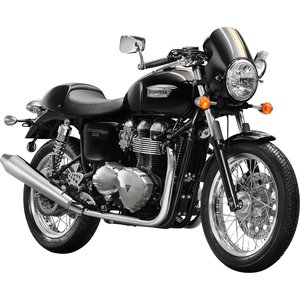Triumph Thruxton 865 (2008–2015): A Timeless Café Racer Experience
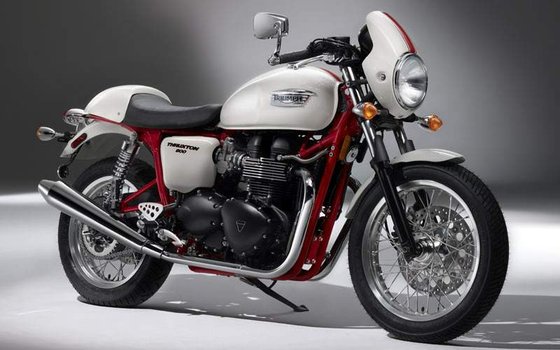
Introduction
The Triumph Thruxton 865 isn’t just a motorcycle—it’s a time machine. Built between 2008 and 2015, this modern classic pays homage to the café racer culture of 1960s Britain while delivering 21st-century engineering. Named after the legendary Thruxton Circuit, where Triumph dominated production racing, this bike captures the essence of speed, style, and rebellion. Whether you’re a rider who remembers the original Ton Up Boys or a newcomer craving retro aesthetics, the Thruxton 865 offers a visceral experience that blends nostalgia with modern reliability. Let’s dive into what makes this machine a standout in the modern classic segment.
Design & Styling: A Nod to the Golden Era
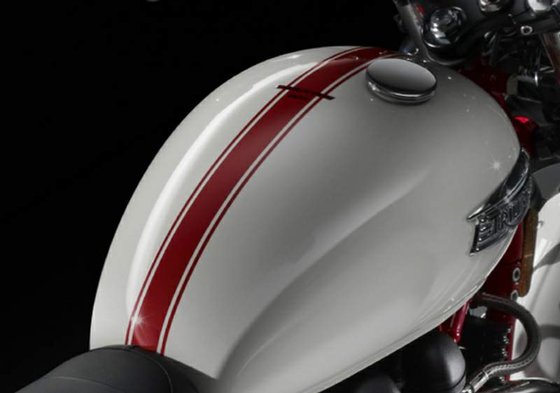
The Thruxton’s design is a masterclass in retro authenticity. From its low-slung "Ace" handlebars to the 18-inch spoked wheels wrapped in period-correct rubber, every detail screams 1960s café racer. The sculpted fuel tank features a racing stripe that flows seamlessly into the tail section, mimicking the single-seat look of vintage racers (though a passenger pad hides discreetly under the cowl). Chrome accents abound, from the twin upswept exhausts to the bar-end mirrors, while the minimalist flyscreen and analog dials reinforce the vintage vibe.
Triumph’s clever engineering hides modern touches in plain sight. The fuel injection system is disguised as carburetors, preserving the classic silhouette, while the air-cooled 865cc parallel-twin engine wears faux pushrod tubes for added old-school charm. Special editions like the Thruxton SE (2010) and Ace Café (2015) added unique flair—think crystal white paint with red frames, oxblood leather seats, and co-branded logos. It’s a bike that looks equally at home parked outside a coffee shop or carving through country roads.
Engine & Performance: Character Over Brutality
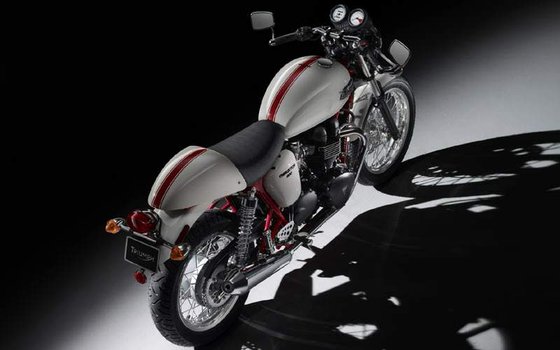
At the heart of the Thruxton lies its air-cooled, 865cc parallel-twin engine—a unit that’s as charismatic as it is dependable. With a 69 hp peak at 7,250 rpm and 53 ft-lb (71.8 Nm) of torque at 5,750 rpm, this isn’t a hyperbike, but it doesn’t need to be. The 360-degree firing interval delivers a throaty, rhythmic exhaust note that’s music to any classic bike enthusiast’s ears.
The Thruxton’s powerband is linear and accessible, with torque peaking early enough to make city riding a breeze. The 5-speed transmission shifts smoothly, though the clutch can feel heavy in stop-and-go traffic. Fuel injection (introduced in 2009) ensures crisp throttle response, while a standing quarter-mile time of 13.2 seconds and a top speed of 115 mph (185 km/h) remind you this café racer has genuine sporting DNA.
Fuel efficiency is respectable at 45 MPG (5.2 L/100 km), though spirited riding will nudge that closer to 40 MPG. The 4.2-gallon (16 L) tank means range anxiety is minimal, making it suitable for weekend blasts or even longer rides—if you can tolerate the sporty ergonomics.
Handling & Ride Experience: Agile, But Not for the Faint of Heart
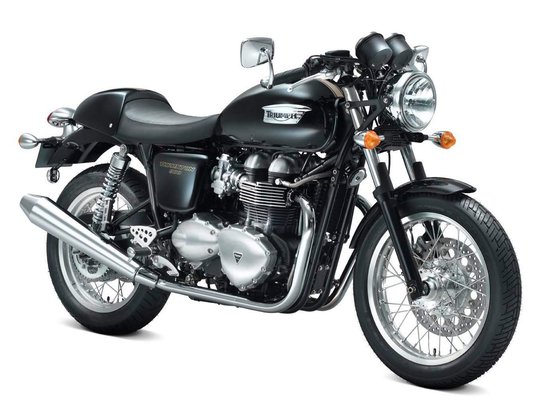
The Thruxton’s chassis is where old-school aesthetics meet modern dynamics. The tubular steel cradle frame, paired with a 26-degree rake and 3.8-inch (97 mm) trail, strikes a balance between agility and stability. 41mm adjustable forks and preload-adjustable twin shocks handle suspension duties, offering a firm but compliant ride—perfect for smooth tarmac, though sharper bumps can feel harsh.
Rider posture is pure café racer: leaned forward with pegs set rearward. At 31.1 inches (790 mm), the seat is low enough for shorter riders, but the narrow profile and lack of padding may test endurance on longer trips. The 451 lb (205 kg) dry weight feels manageable at speed, though slow-speed maneuvers require careful input.
Braking is handled by a single 320mm front disc with a Nissin 2-piston caliper—a significant upgrade over vintage drums. While adequate for casual riding, aggressive stops demand a firm squeeze. The rear 255mm disc is more of a placeholder, but ABS was notably absent throughout this generation.
Competition: How Does the Thruxton Stack Up?
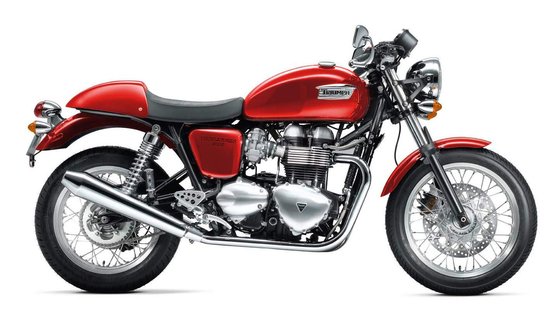
In the modern classic arena, the Thruxton 865 faces stiff rivals:
- Ducati Scrambler Icon: More modern tech (ABS, traction control) and a lighter chassis, but lacks the Thruxton’s retro authenticity.
- Moto Guzzi V7: Shaft drive and Italian flair, but down on power (52 hp) and less engaging to ride.
- Kawasaki W800: Closer in spirit with a 360-degree parallel-twin, but heavier and slower-revving.
The Thruxton’s edge lies in its British heritage and balanced performance. It’s neither the fastest nor the lightest, but its combination of aesthetics, sound, and road manners creates an emotional connection that metrics can’t quantify. That said, riders prioritizing comfort or modern aids might find alternatives more practical.
Maintenance: Keeping the Legend Alive
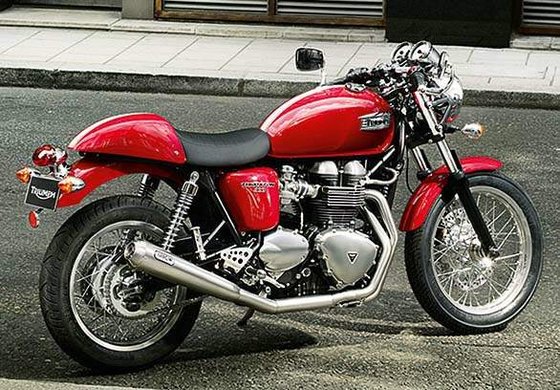
Ownership is straightforward if you’re mechanically inclined. Key points:
- Oil Changes: Use 15W/50 synthetic every 3,700 miles (6,000 km).
- Valve Adjustments: Check every 12,000 miles (19,000 km)—intake valves at 0.15–0.20 mm, exhaust at 0.25–0.30 mm.
- Chain Care: Lubricate the X-ring chain regularly; adjust tension to 1.2–1.6 inches (30–40 mm).
- Tire Pressure: 33 PSI (2.3 bar) front / 37 PSI (2.6 bar) rear for optimal grip and wear.
Common upgrades include aftermarket exhausts (like the Arrow system) for better sound and weight savings, or swapping the shocks for adjustable units to fine-tune ride quality. Parts availability is excellent, and Triumph’s build quality ensures longevity with proper care.
Final Thoughts
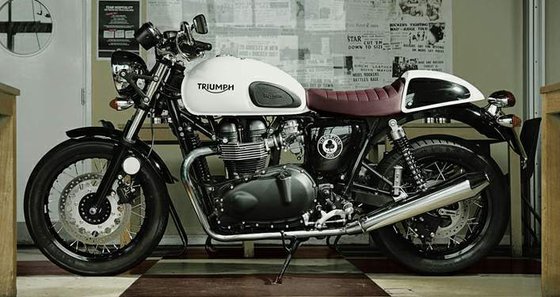
The Triumph Thruxton 865 isn’t about chasing specs—it’s about chasing feelings. From the burble of its twin to the way sunlight glints off its chrome, this bike celebrates motorcycling’s golden age without sacrificing everyday usability. It’s a machine that demands participation, rewarding riders who appreciate craftsmanship over convenience. Whether you’re customizing it into a personalized café racer or preserving its factory-fresh glory, the Thruxton remains a testament to Triumph’s ability to blend history with heart.
At MOTOPARTS.store, we’re here to help you keep your Thruxton running smoothly or elevate its performance with curated upgrades. After all, every classic deserves a little love—and maybe a louder exhaust.

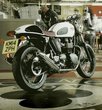

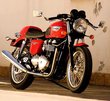


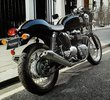

Specifications sheet
| Engine | |
|---|---|
| Stroke: | Four-stroke |
| Max power: | 51 kW | 68.0 hp |
| Max torque: | 72 Nm |
| Fuel system: | Multipoint sequential electronic fuel injection (disguised as carburetors) |
| Lubrication: | Wet sump |
| Max power @: | 7400 rpm |
| Displacement: | 865 ccm |
| Max torque @: | 5800 rpm |
| Configuration: | Parallel |
| Cooling system: | Air-cooled |
| Compression ratio: | 9.9:1 |
| Number of cylinders: | 2 |
| Dimensions | |
|---|---|
| Wheelbase: | 1490 mm (58.7 in) |
| Dry weight: | 205 |
| Wet weight: | 230 |
| Seat height: | 790–820 mm (31.1–32.3 in) |
| Overall width: | 714–830 mm (28.1–32.7 in) |
| Overall height: | 1095–1170 mm (43.1–46.4 in) |
| Overall length: | 2150–2212 mm (84.6–87.1 in) |
| Fuel tank capacity: | 16 L (4.2 US gal) |
| Drivetrain | |
|---|---|
| Chain type: | X-ring |
| Final drive: | chain |
| Chain length: | 106 |
| Transmission: | 5-speed |
| Rear sprocket: | 43 |
| Front sprocket: | 18 |
| Maintenance | |
|---|---|
| Engine oil: | 15W50 |
| Brake fluid: | DOT 4 |
| Spark plugs: | NGK DPR8EA-9 or DPR8EIX-9 |
| Spark plug gap: | 0.9 |
| Forks oil capacity: | 0.97 |
| Engine oil capacity: | 3.8 |
| Engine oil change interval: | Every 5000 km or 2 years |
| Valve clearance (intake, cold): | 0.15–0.20 mm |
| Valve clearance check interval: | 24,000 km (15,000 mi) |
| Valve clearance (exhaust, cold): | 0.25–0.30 mm |
| Recommended tire pressure (rear): | 2.6 bar (38 psi) |
| Recommended tire pressure (front): | 2.3 bar (33 psi) |
| Chassis and Suspension | |
|---|---|
| Rake: | 26° |
| Frame: | Tubular steel cradle |
| Trail: | 97 mm (3.8 in) |
| Rear tire: | 130/80-17 |
| Front tire: | 100/90-18 |
| Rear brakes: | Single 255mm disc, 2-piston caliper |
| Front brakes: | Single 320mm floating disc, Nissin 2-piston caliper |
| Rear suspension: | Twin chromed spring shocks, adjustable preload |
| Front suspension: | 41mm telescopic forks, adjustable preload |
| Rear wheel travel: | 106 mm (4.1 in) |
| Front wheel travel: | 120 mm (4.7 in) |



